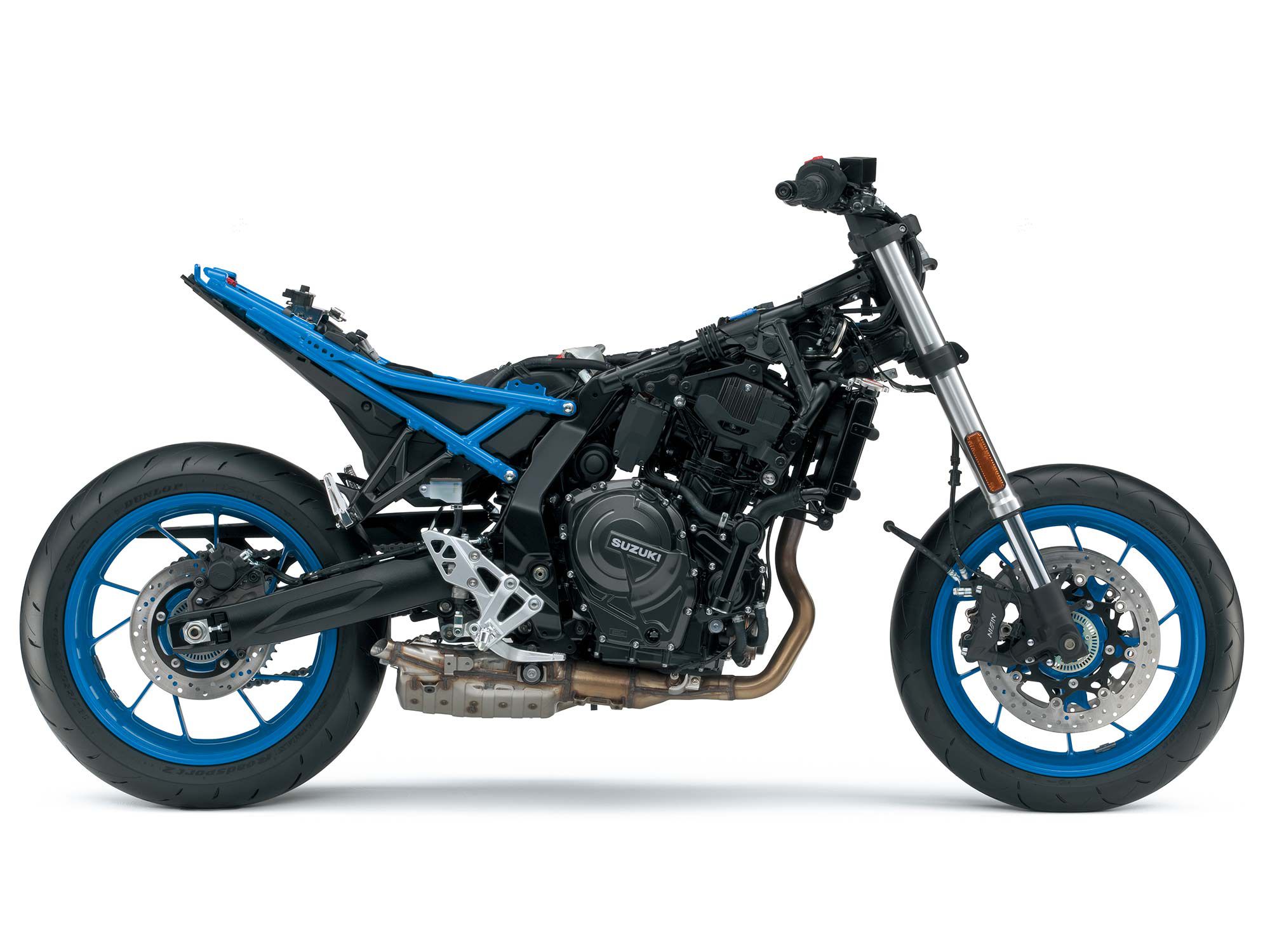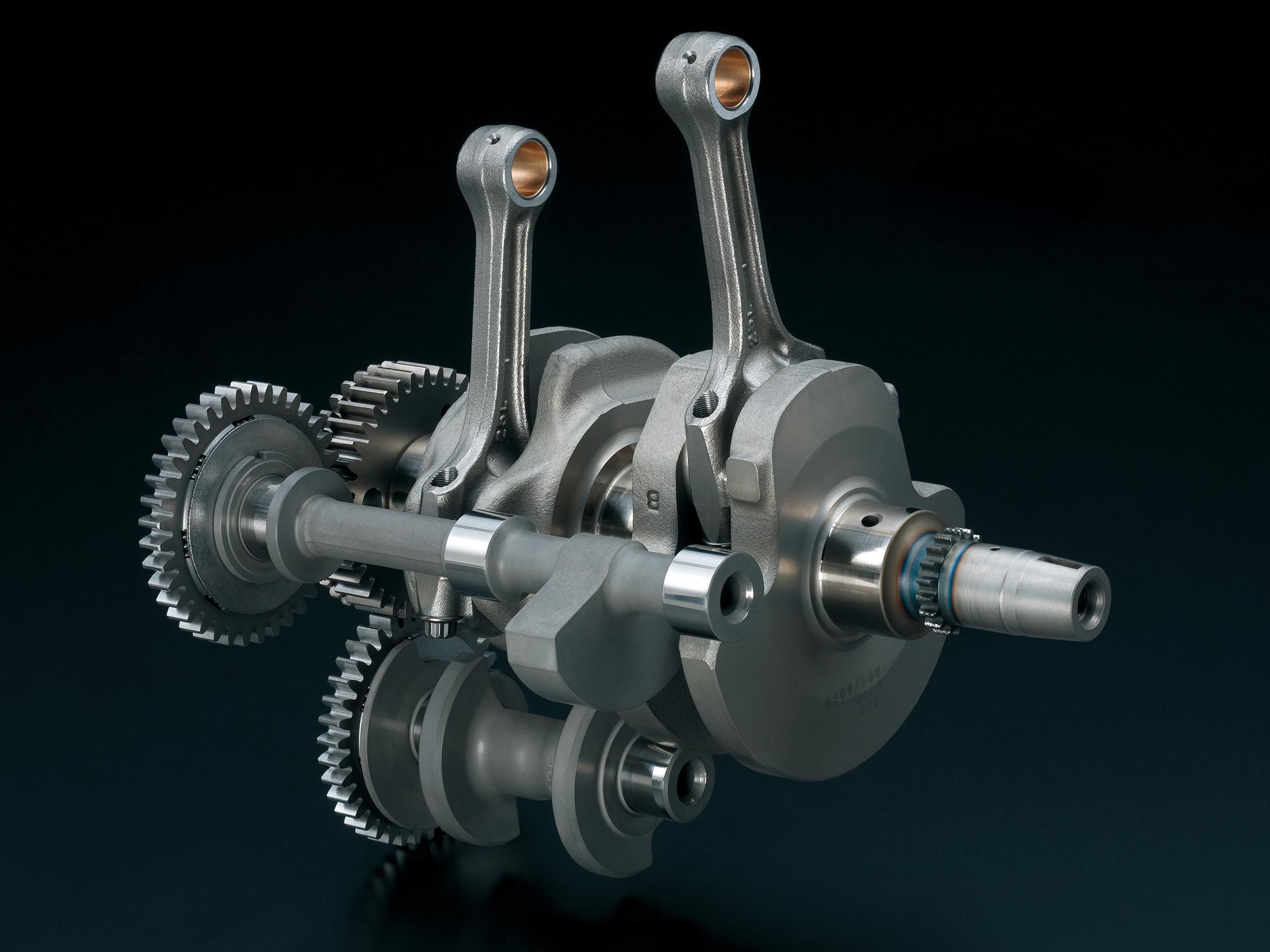
Suzuki has released information and technical specifications on its newly designed 776cc parallel-twin gasoline engine. Featuring a four-stroke, water-cooled internal combustion design, the engine will power future new motorcycles including the soon-to-be-released GSX-8S naked bike and V-Strom 800DE adventure motorcycle.
“Choosing a parallel-twin configuration led to the creation of a new compact powerplant that permits design flexibility so Suzuki’s designers can create ideal chassis geometry for a variety of motorcycle types,” Suzuki said in its official news release. “These goals were met with a narrow width, short length, and lightweight engine that can be positioned in the chassis for optimal handling and an ergonomically sound and comfortable riding position.”
The twin features oversquare bore and stroke measurements (84.0mm x 70.0mm). Forged aluminum pistons squeeze fuel to a compression ratio of 12.8:1. A four-valve cylinder head houses a pair of overhead camshafts.
This configuration follows the basic format of parallel twins from other manufacturers, such as KTM and Yamaha, most notably 270-degree crankshaft rotation. This results in added engine character, similar to a conventional V-twin.
“The 270-degree crankshaft configuration provides a similar power delivery as the 90-degree V-twins used in other Suzukis [SV650] while producing a unique and exciting exhaust note,” Suzuki Motor wrote.
To reduce unwanted engine vibration, Suzuki employs an innovative cross balancer.
“This patented mechanism suppresses engine vibration making for smoother engine performance than parallel twins of the past were known for,” Suzuki explained in is press release.
“Balancer No.1 cancels the primary vibration generated by the piston (reciprocating weight) of the first cylinder, while balancer No.2 cancels the primary vibration of the second cylinder,” the press release continued. “Adopting a 270-degree crankshaft angle cancels secondary vibration, contributing to even smoother engine operation. Furthermore, placing the two balancers at 90 degrees to the crankshaft with each positioned equidistant from the crankshaft cancels primary couple vibration, further smoothing power delivery.”
The engine draws clean air from a non-ram air equipped 6-liter airbox. A pair of high-pressure (49 psi) 10-hole fuel injectors deliver fuel through electronically controlled throttle bodies (42mm). These ride-by-wire-actuated throttle bodies are compatible with Suzuki’s Drive Mode Selector (adjustable combined and throttle maps) and its traction control system. A 2-into-1 exhaust with a dual-stage catalytic converter expels spent gases while complying with global noise and emission standards.
Power is augmented via slipper-actuated wet clutch and six-speed gearbox that features an external bidirectional electronic quickshifter.
Suzuki has not yet announced power output or fuel consumption figures for its new engine.

Source: MotorCyclistOnline.com
